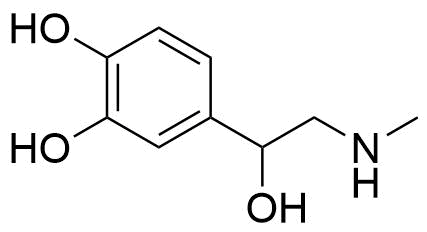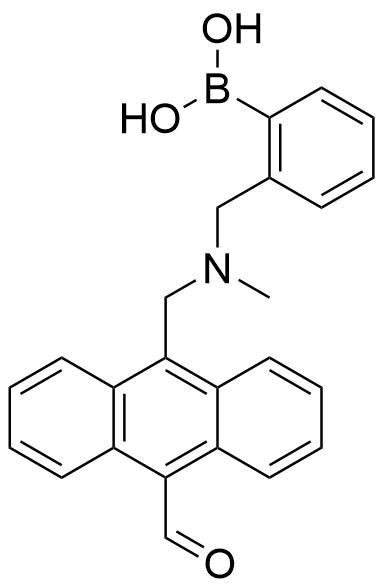Binding Properties
| 𝜈 | Molecule 1 : 1 Host | ||
| Ka = | 5050.0 | M-1 | |
| Kd = | |||
| logKa = | |||
| T | 25.0 °C | ||
| Energy | kJ mol-1 | kcal mol-1 | |||
|---|---|---|---|---|---|
| ΔG | = | -21.14 | -5.05 |
These are the specifications of the determination of the experimental results.
| Detection Method: | Direct | |||
| Assay Type: | Direct Binding Assay | |||
| Technique: | Fluorescence | |||
| 𝛌ex | = | 397.0 nm | ||
Detailed information about the solvation.
| Solvent System | Buffer System | 50 mM HEPES 50 % MeOH pH-7.4 |
| Solvents | water | 50.0 % |
| methanol | 50.0 % | |
| Additives | Hepes | 50.0 mM |
| Source of Concentration | ||
| Total concentration | 50.0 mM | |
| pH | 7.4 |
Please find here information about the dataset this interaction is part of.
| Citation: |
L. Grimm, SupraBank 2025, Fluorescence Sensing of Dopamine (dataset). https://doi.org/10.34804/supra.20210928234 |
| Link: | https://doi.org/10.34804/supra.20210928234 |
| Export: | BibTex | RIS | EndNote |
Please find here information about the scholarly article describing the results derived from that data.
| Citation: |
Bulletin of the Korean Chemical Society 2005, 26, 2041–2043. |
| Link: | https://doi.org/10.5012/BKCS.2005.26.12.2041 |
Binding Isotherm Simulations
The plot depicts the binding isotherm simulation of a 1:1 interaction of D/L-Adrenaline (0.0039603960396039604 M) and (2-((((10-formylanthracen-9-yl)methyl)(methyl)amino)methyl)phenyl)boronic acid (0 — 0.007920792079207921 M).
Please sign in: customize the simulation by signing in to the SupraBank.




